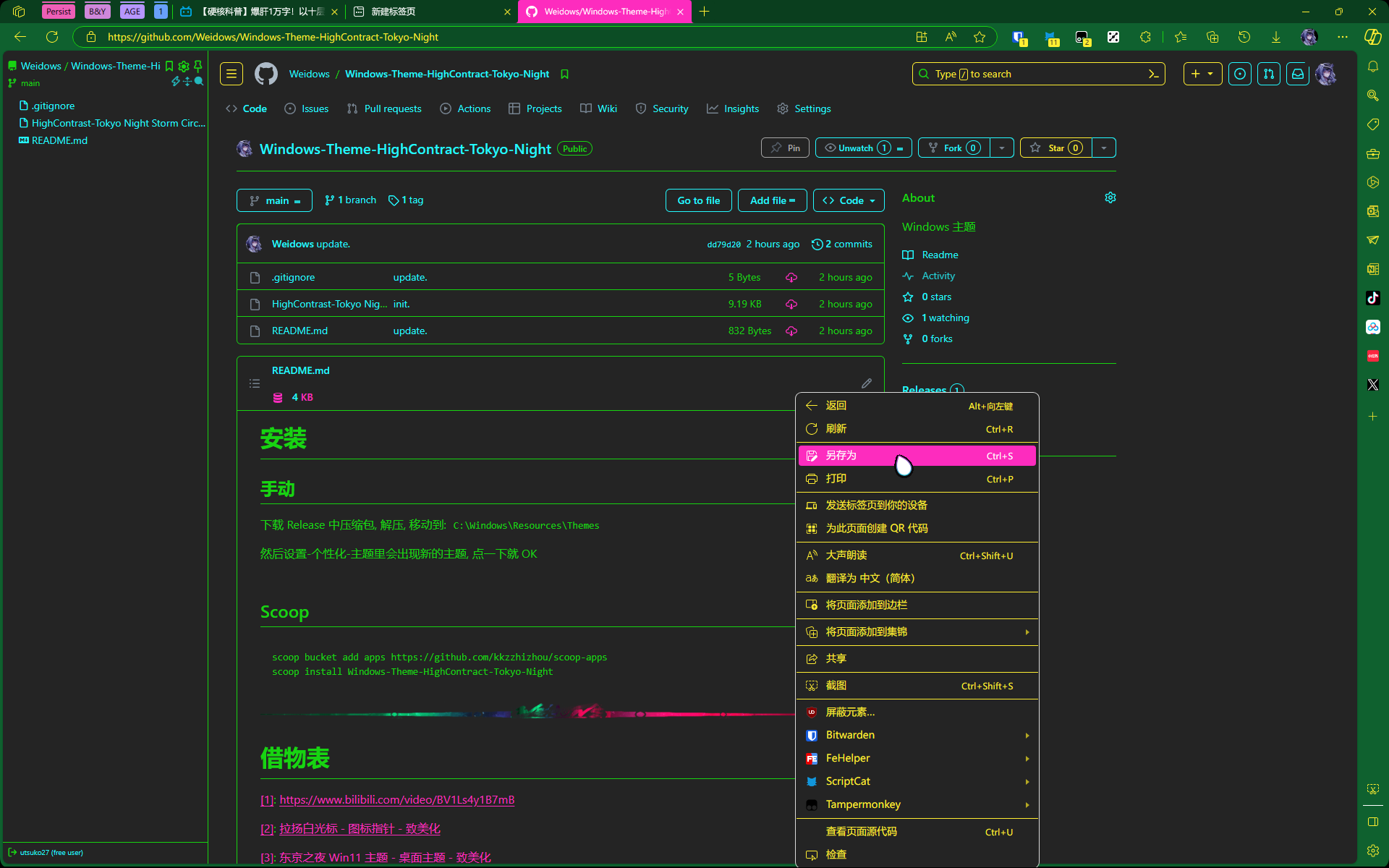🥼JavaWeb~(肆)摸索JSP,JavaBean
笔记代码
JSP
定制错误页面
方法一: 直接在 jsp 页面配置 errorPage
errors/index.jsp<%@ page contentType="text/html;charset=UTF-8" language="java" %>
<%--此处定制错误页面指向--%>
<%@ page errorPage="errors/500.jsp" %>
<html>
<head>
<title>错误页面</title>
</head>
<body>
<%
int a = 1 / 0;
%>
</body>
</html>
errors/500.jsp<%@ page contentType="text/html;charset=UTF-8" language="java" %>
<html>
<head>
<title>500错误</title>
</head>
<body>
<h1>500错误页面.</h1>
</body>
</html>
方法二: 在 web.xml 中配置
errors/404.jsp
<%@ page contentType="text/html;charset=UTF-8" language="java" %>
<html>
<head>
<title>404错误</title>
</head>
<body>
<h1>404错误页面.</h1>
</body>
</html>
web.xml
<web-app>
<display-name>Archetype Created Web Application</display-name>
<error-page>
<error-code>404</error-code>
<location>/errors/404.jsp</location>
</error-page>
<error-page>
<error-code>500</error-code>
<location>/errors/500.jsp</location>
</error-page>
</web-app>
合并页面
common/header.jsp<%@ page contentType="text/html;charset=UTF-8" language="java" %>
<h1>这里是header</h1>common/footer.jsp<%@ page contentType="text/html;charset=UTF-8" language="java" %>
<h1>这里是footer</h1>common/index.jsp<%@ page contentType="text/html;charset=UTF-8" language="java" %>
<html>
<head>
<title>测试common</title>
</head>
<body>
<!--
这种会把include的页面内容合并进本页面,最后是展示一个页面
-->
<%@ include file="header.jsp" %>
<h1>网页主体</h1>
<%@ include file="footer.jsp" %>
<HR />
<!--
jsp:include标签,本质是导入其他文件内容,最后是多个文件合为一个页面展示
(更灵活,建议用这个)
上面方法的因为是合并,所以很有可能出现变量重名,干扰的问题
这个方法不同文件之间互不干扰
-->
<jsp:include page="/common/header.jsp" />
<h1>网页主体</h1>
<jsp:include page="/common/footer.jsp" />
</body>
</html>
内置对象及作用域
内置对象
PageContext 存东西
Request 存东西
Response
Session 存东西
Application 【SerlvetContext】 存东西
config 【SerlvetConfig】
out
page ,不用了解
exception操作对象
demo/1.jsp<!--
* @?: *********************************************************************
* : Weidows
* : 2021-04-07 16:29:42
* : Weidows
* : 2021-04-07 17:29:11
* : \Weidows\JavaWeb\JSP\src\main\webapp\1.jsp
* :
* @!: *********************************************************************
* servlet 2.3默认不支持EL表达式,需要开启.
-->
<%@ page isELIgnored="false" %>
<%@ page contentType="text/html;charset=UTF-8" language="java" %>
<html>
<head>
<title>index4</title>
</head>
<body>
<%--
PageContext 存东西
Request 存东西
Response
Session 存东西
Application 【SerlvetContext】 存东西
config 【SerlvetConfig】
out
page ,不用了解
exception
--%>
<%
pageContext.setAttribute("name1", "秦疆1号"); // 保存的数据只在一个页面中有效
request.setAttribute("name2", "秦疆2号"); // 保存的数据只在一次请求中有效,请求转发会携带这个数据
session.setAttribute("name3", "秦疆3号"); // 保存的数据只在一次会话中有效,从打开浏览器到关闭浏览器
application.setAttribute("name4", "秦疆4号"); // 保存的数据只在服务器中有效,从打开服务器到关闭服务器
// 作用域从小到大
String name1 = (String) pageContext.findAttribute("name1");
String name2 = (String) pageContext.findAttribute("name2");
String name3 = (String) pageContext.findAttribute("name3");
String name4 = (String) pageContext.findAttribute("name4");
String name5 = (String) pageContext.findAttribute("name5"); // 这个不存在
%>
<%--
EL表达式
${内容} == <%= 内容 %>
用EL表达式的话,null值不会显示,而使用JSP表达式会显示null值
--%>
<h1>取出的内容:</h1>
<h3>${name1}</h3>
<h3>${name2}</h3>
<h3>${name3}</h3>
<h3>${name4}</h3>
<HR>
<h3>${name5}</h3>
<h3><%=name5%></h3>
</body>
</html>作用域
JSP 标签
例子: 使用 JSP 标签转发页面,读取参数并显示出来.
src/main/webapp/demo/JSP-label/forward.jsp<%@ page contentType="text/html;charset=UTF-8" language="java" %>
<html>
<head>
<title>JSP-label</title>
</head>
<body>
<%-- 转发request携带的参数(注意JSP标签内不能有注释,会报错500) --%>
<jsp:forward page="forward.jsp">
<jsp:param name="name" value="kuangshen"/>
<jsp:param name="age" value="12"/>
</jsp:forward>
</body>
</html>src/main/webapp/demo/JSP-label/forward.jsp<%@ page contentType="text/html;charset=UTF-8" language="java" %>
<%@ page isELIgnored="false" %>
<html>
<head>
<title>转发页面</title>
</head>
<body>
<%
pageContext.setAttribute("name", request.getParameter("name"));
pageContext.setAttribute("age", request.getParameter("age"));
%>
<h3>姓名: ${name}</h3>
<h3>年龄: ${age}</h3>
</body>
</html>
JSTL 表达式
JSTL 标签库的使用就是为了弥补 HTML 标签的不足,功能上与 Java 相似.
分类
格式化标签
SQL 标签
XML 标签
JSTL 函数
核心标签 (掌握部分)
使用
在 pom.xml 中导入依赖
<!-- JSTL表达式依赖 -->
<dependency>
<groupId>javax.servlet</groupId>
<artifactId>jstl</artifactId>
<version>1.2</version>
</dependency>
<!-- Standard标签库 -->
<dependency>
<groupId>taglibs</groupId>
<artifactId>standard</artifactId>
<version>1.1.2</version>
</dependency>在 JSP 页面还需要引入对应要使用的 taglib,这里只用到 core:
<%@ taglib prefix="c" uri="http://java.sun.com/jsp/jstl/core" %>
if
<%@ page contentType="text/html;charset=UTF-8" language="java" %> <%@ taglib
prefix="c" uri="http://java.sun.com/jsp/jstl/core" %> <%@ page
isELIgnored="false" %>
<html>
<head>
<title>if测试</title>
</head>
<body>
<%--action是代码提交位置--%>
<form action="if.jsp" method="post">
<label>
用户名:
<input type="text" name="username" />
</label>
<input type="submit" value="登录" />
</form>
<hr />
<%--
EL表达式获取表单中的数据 ${param.参数名}
判断如果提交的用户名是admin,则登录成功,并把isAdmin置为true
--%>
<c:if test="${param.username=='admin'}" var="isAdmin">
<c:out value="管理员欢迎您!" />
</c:if>
</body>
</html>choose-when
<%-- Created by IntelliJ IDEA. User: 29845 Date: 2021/4/8 Time: 20:38 To change
this template use File | Settings | File Templates. --%> <%@ page
contentType="text/html;charset=UTF-8" language="java" %> <%@ page
isELIgnored="false" %>
<html>
<head>
<title>choose-when测试</title>
</head>
<body>
<form action="" method="post">
<label>
<%--定义一个变量score--%>
<input type="text" name="score" />
</label>
<input type="submit" name="提交" />
</form>
<c:choose>
<c:when test="${param.score>=90}"> 你的成绩为优秀 </c:when>
<c:when test="${param.score>=80}"> 你的成绩为一般 </c:when>
<c:when test="${param.score>=70}"> 你的成绩为良好 </c:when>
<c:when test="${param.score<=60}"> 你的成绩为不及格 </c:when>
</c:choose>
</body>
</html>forEach
<%@ taglib prefix="c" uri="http://java.sun.com/jsp/jstl/core" %>
<%@ page import="java.util.ArrayList" %><%--
Created by IntelliJ IDEA.
User: 29845
Date: 2021/4/8
Time: 20:59
To change this template use File | Settings | File Templates.
--%>
<%@ page contentType="text/html;charset=UTF-8" language="java" %>
<%@ page isELIgnored="false" %>
<html>
<head>
<title>forEach</title>
</head>
<body>
<%
ArrayList<String> setPeople = new ArrayList<>();
setPeople.add(0, "张三");
setPeople.add(1, "李四");
setPeople.add(2, "王五");
setPeople.add(3, "赵六");
setPeople.add(4, "田六");
request.setAttribute("list", setPeople);
%>
<%--
var , 每一次遍历出来的变量
items, 要遍历的对象
可选:
begin, 哪里开始
end, 到哪里
step, 步长
--%>
<c:forEach var="getPeople" items="${list}" begin="1" end="3" step="1">
<c:out value="${getPeople}"/>
<br/>
</c:forEach>
</body>
</html>
JavaBean
JavaBean(实体类) 有特定的写法:
一个无参构造
属性必须私有化
必须有对应的 get/set 方法;
一般用来和数据库的字段做映射 ORM(对象关系映射)
表—>类
字段–>属性
行记录---->对象
样例 Java 类:
src/main/java/pojo/People.javapackage pojo;
public class People {
private int id;
private String name;
private int age;
private String address;
public People() {
}
public People(int id, String name, int age, String address) {
this.id = id;
this.name = name;
this.age = age;
this.address = address;
}
public int getId() {
return id;
}
public void setId(int id) {
this.id = id;
}
public String getName() {
return name;
}
public void setName(String name) {
this.name = name;
}
public int getAge() {
return age;
}
public void setAge(int age) {
this.age = age;
}
public String getAddress() {
return address;
}
public void setAddress(String address) {
this.address = address;
}
public String toString() {
return "People{" +
"id=" + id +
", name='" + name + '\'' +
", age=" + age +
", address='" + address + '\'' +
'}';
}
public static void main(String[] args) {
new People(1, "秦疆1号", 3, "西安");
new People(2, "秦疆2号", 3, "西安");
new People(3, "秦疆3号", 3, "西安");
}
}样例 JSP:
src/main/webapp/javaBean.jsp- 这里只是简单介绍 JavaBean 及其使用,并不推荐用 JSP 标签来操作 JavaBean,还是推荐用 Java 代码操作实体类对象.
<%-- Created by IntelliJ IDEA. User: 29845 Date: 2021/4/8 Time: 23:32 To change
this template use File | Settings | File Templates. --%> <%@ page
contentType="text/html;charset=UTF-8" language="java" %>
<html>
<head>
<title>javaBean测试</title>
</head>
<body>
<jsp:useBean id="people" class="pojo.People" scope="page" />
<jsp:setProperty name="people" property="id" value="1" />
<jsp:setProperty name="people" property="name" value="狂神说" />
<jsp:setProperty name="people" property="age" value="3" />
<jsp:setProperty name="people" property="address" value="西安" />
id:
<jsp:getProperty name="people" property="id" />
name:
<jsp:getProperty name="people" property="name" />
age:
<jsp:getProperty name="people" property="age" />
address:
<jsp:getProperty name="people" property="address" />
</body>
</html>
本博客所有文章除特别声明外,均采用 CC BY-NC-SA 4.0 许可协议。转载请注明来自 ⭐️齐下无贰⭐️!
评论










